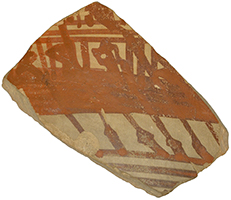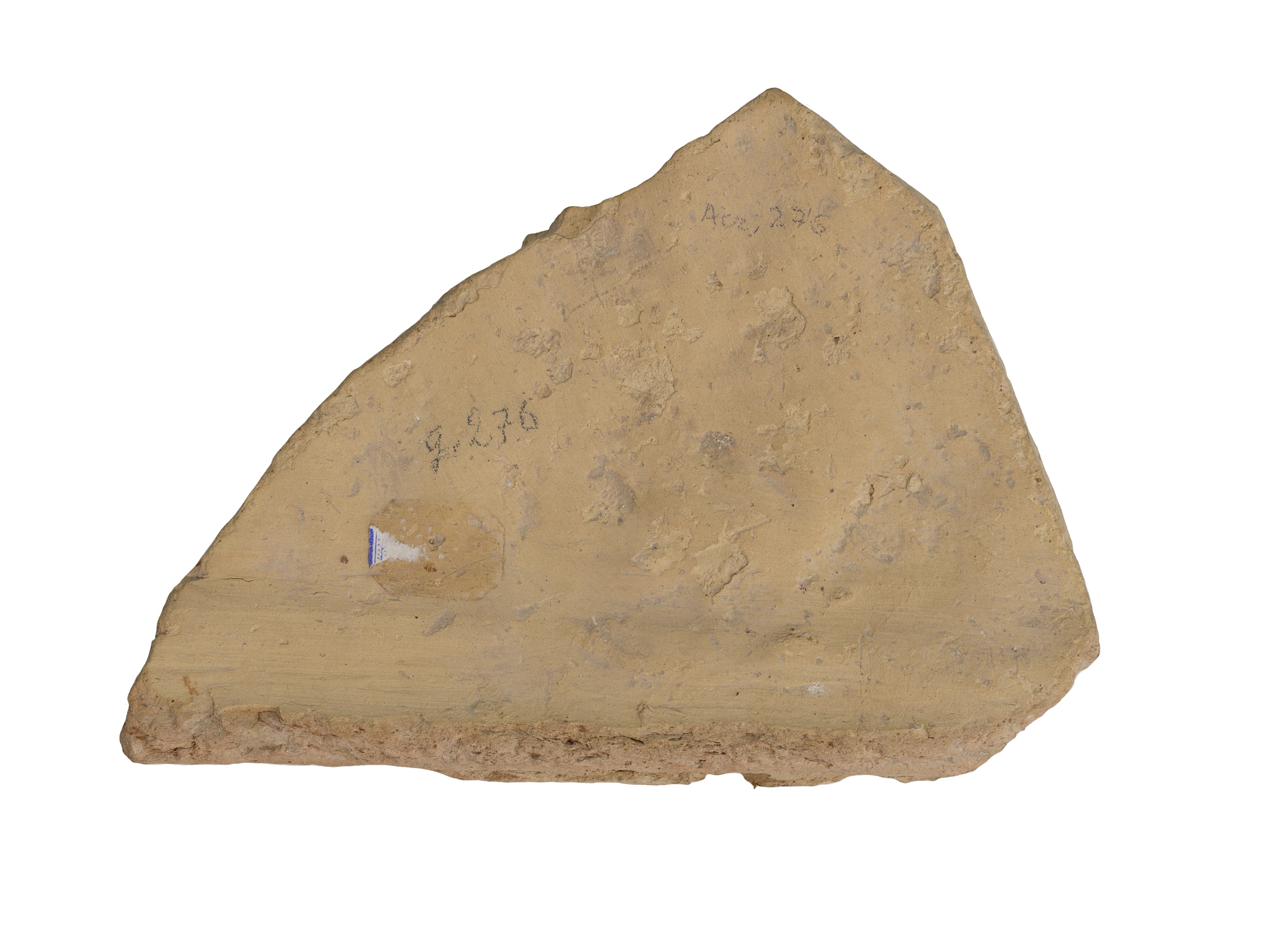Midships section of a double-levelled ship to the left. Above the thick line which represents the hull are reserved squares alternating with rectangles painted solid. Each square represents a port, as indicated by the arms of the rowers grasping their oars. Above these are two thinner horizontal lines joined by numerous short verticals represents a raised railing above deck level. Part of the mast is preserved between the left and centre oarsmen on the upper level. There are four oarsmen preserved on the bottom level and three more on the upper, all facing to the right, their torsos inclined backwards in the same pose as the earlier Dipylon depictions. The oars of the upper level reappear beneath the ship's hull, corresponding to oars 1, 3, 5, and 7. The torsos of the rowers on the lower level are hidden behind the solid rectangles which represent screens, which their heads disappear behind the superstructure (deck level wale?), leaving only their arms and shoulder peeking out.
Double-levelled galley
A161
Late Geometric IIa (c. 710-700 B.C.)
Acropolis, Athens
Attic
Athens National Museum 265
Basch 1987: 182, no. 384; Kirk 1949: 109, no. 31, pl. 40.3; Morrison-Williams 1968: 37, 39, Geom. 43, pl 7e; Pernice 1892: fig. 5; Wachsmann 1998: 133-34, fig. 7.14; Williams 1958: 125-26, pl. XIV.b
This depiction is unambiguously interpreted as a double levelled-ship. The stanchions which were previously painted as thin verticals have been broadened into screens that protect the lower level rowers which are shown largely hidden behind them. The rowers are furthermore arranged in echelon rather than immediately above one another, which is the correct formation in a two-banked vessel. The artist has chosen to interrupt the oars of the upper level and pick them up again below the keel instead of showing them continuing against the rower ports. This was ostensibly a decision aimed at clarity and to prevent clutter. That he was not overly careful in rendering them precisely is illustrated by the oar of the first bottom rower on the left, where the continuation of the oar below the hull is misaligned.
Basch, L. 1987. Le musée imaginaire de la marine antique. Athens: Institut Hellénique pour la preservation de la tradition nautique.
Kirk, G.S. 1949. “Ships on Geometric Vases.” BSA 44: 93-153, pls. 38-40.
Morrison, J.S. and R.T. Williams. 1968. Greek Oared Ships: 900-322 B.C. Cambridge: Cambridge University Press.
Pernice, E. 1892. “Über die Schiffsbilder auf den Dipylonvasen,” AM 17: 285-306.
Wachsmann, S. 1998. Seagoing Ships & Seamanship in the Bronze Age Levant. College Station, TX: Texas A&M University Press.
Williams, R. T. 1958. “Early Greek Ships of two levels,” JHS 78: 121-130.






